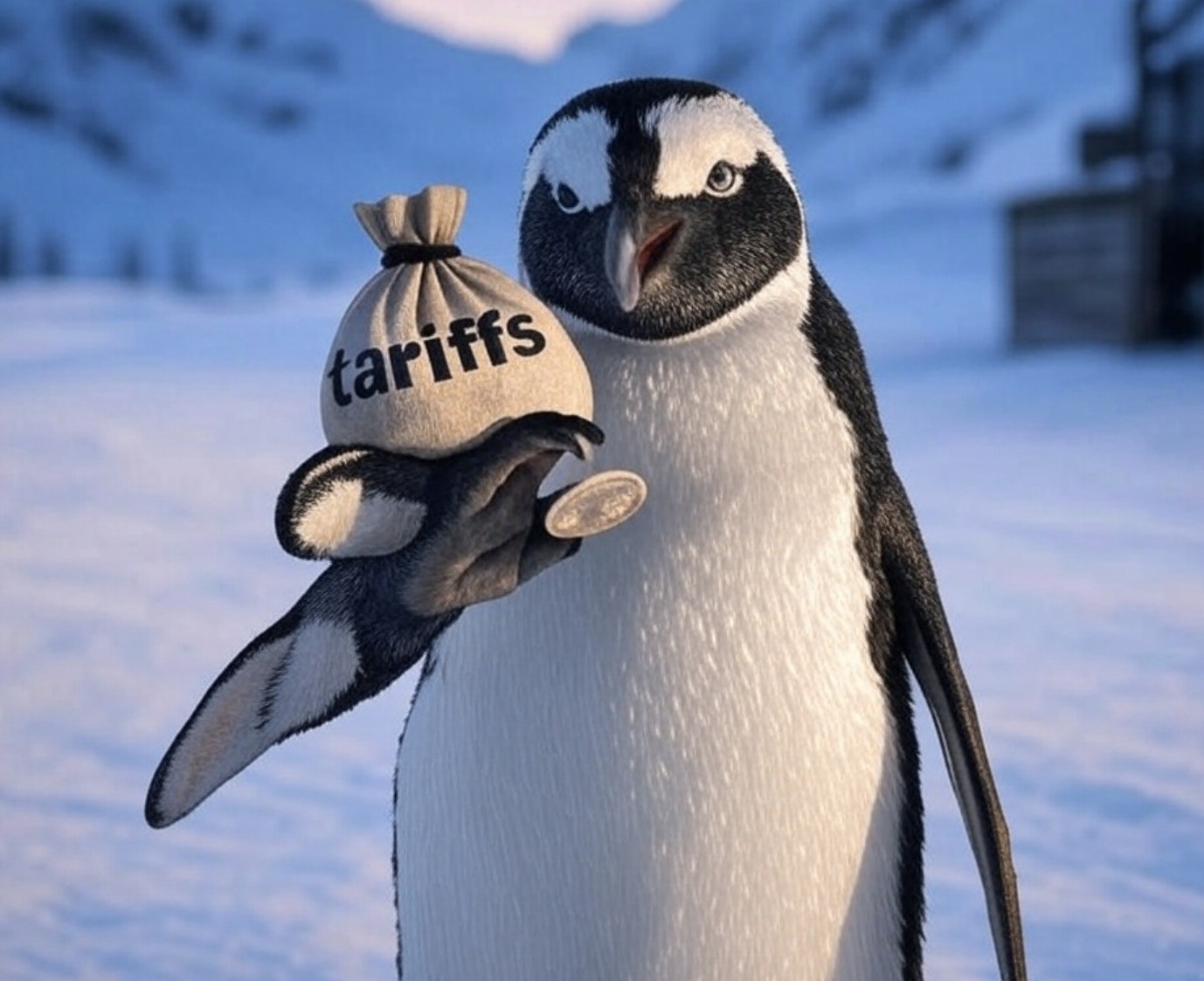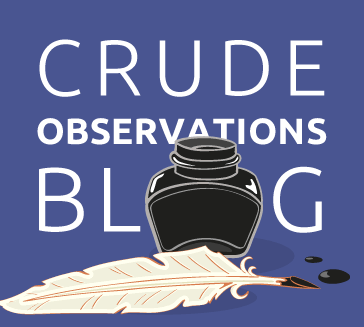This week is what I will call the calm before the storm since as we all know next weekend is the granddaddy of them of them all, the Kentucky Derby of the oil year. That time when all things momentous are decided and the fate of the free world is determined by a gathering of thugs, despots and wannabe dictators. I am referring of course to the upcoming OPEC meeting where they will debate (for show) the cuts in production they have already agreed to.
But really, enough about that. Right now we are facing here in Western Canada a critical commodity pricing issue that some have referred to, rightly or wrongly, as existential to the oil and gas industry. As a result, politicians and analysts, investors and commentators, the proletariat, the media, my kids, my cats and everyone else with at least a passing interest in telling people what to do has been wracking their brains trying to come up with a solution.
As many of you know, last week I proposed a range of well thought-out, creative and practical ideas, but no one seems to have seized on them as I hoped (I’m looking at you Rachel Notley!). Out of this morass of ideas, there is one solution that has come up repeatedly: “curtailment”. This of course is a fancy way of saying “production cuts”. It is expected that a “cut” in production will in short order ease the massive surplus of oil that has built up in Alberta because of production growth accelerating past offtake capacity and the knock-on effects of the largest turnaround season in US refinery memory.
Makes sense, right? You’re producing too much and prices are low. So produce less and the price rises.
But how do you get there? This is where the breakdown happens because there are so many actors involved, the problem is so acute and immediate, no one knows what the long term effects will be and everyone has a different stake in a changing game.
For this reason there is a loud and growing chorus of people saying that government has to act to save the day and save industry. On the flip side, there are those who look at all the above who think that government mandated cutbacks are the wrong way to go and that the market will solve things.
Is anyone right or wrong? Not really, there are compelling discussion points on either side. But if we’re going to go down or not go down a road, let’s all agree that it would be good to be informed.
So, first off, as I’ve stated previously I am in the free market camp. I am against a government mandated curtailment because I am fundamental in my belief that the market needs to find the solution. I get the argument that government has caused this problem by bungling the pipeline file so limited government action to solve it may be warranted. It is a comforting argument and seems so rational. But my fear is the unintended consequence. Governments are at their worst when they are forced to “do something, anything” in the short term. It leads to bad policy and outcomes that are rarely considered in the heat of the moment. I have no doubt that government needs to be involved in the long term solution (more rail, pipelines), but I believe it is up to industry to solve this particular short term crisis.
Also, to be 100% clear, I am also of the view that some form of cutback needs to happen and as I have pointed out here numerous times, a number of producers have already cut back production while others haven’t. And this is where you get into the different agendas of the various players.
Currently the only proposal on government imposed curtailment on the table is the 10% across the board cut (exempting smaller producers) put forward by Jason Kenney and the UCP (which may be off an Alberta Party blueprint but that’s for another day). I don’t want to make this an exercise in picking on this particular plan, because it is well thought out and broadly supported. But I think this plan and others I have seen suffer the same fundamental weakness – they don’t attempt to follow through on the implications of the proposal and search for the unintended consequences.
OK, so now that you know my obvious bias, let me give you a random walk through why I am so stuck in this belief. Top down, in my eyes there are far too many questions that are unanswered and may actually be unanswerable, which leads me to believe that any kind of mandatory or legislated curtailment isn’t the right play. So I’m presenting it in the form of the questions that rattle through my head. These are in no particular order and many have no answers.
Questions such as:
Does anyone actually know how many barrels are actually exposed to the WCS price as posted? Alberta produces about 3.4 million of oil a day, about 2 million of which is heavy oil. I have read that 500,000 barrels a day make it down to the Gulf Coast where they receive better pricing. Does that leave 1.5 million barrels of oil per day exposed to this price? Or is it more? What about upgraded bitumen? That’s about 1 million barrels per day. Or condensates? What about Saskatchewan?
What is the effect on royalties? Are royalties suffering from this price and how? Royalties are benchmarked to WTI and for oilsands projects are based on actual revenues received on a project by project basis and depend on what stage of “payout” they are at. Which projects do you cut back?
What about hedging? Before enacting anything I would want to have a really clear idea of what exposure all these companies have to the spot market. I suspect that the larger more sophisticated companies would have the foresight and capital to lock in prices when the differential was much lower. This would seem to suggest that the spot market exposure is really more of a problem for smaller companies. Exempting the smaller producers likely improves their spot price exposure, but maybe if the big guys aren’t so exposed a subsidy for the smaller guys makes more sense.
What about capex? Capital budgets for a lot of companies have yet to be set for 2019 and for a lot of them, spending stopped sometime in Q4. What happens to that spending under a curtail/no curtail scenario? I suspect that no matter what, capital spending is going to be down next year. I also suspect that no matter what, capital spending might actually be the same. In other words, it is entirely likely that the capital spend over the course of 2019 is unlikely to be materially different for companies either way.
Why are we still talking about a $50 differential when it’s currently $32? Doesn’t this mean that the market is working? If it is, shouldn’t we let it play out a little longer?
What about Crude by rail? Should we wait and see how that plays out before dropping the government hammer? September data showed a record 270,000 barrels of oil per day travelling the rails. That’s a lagging number that everyone says is growing, plus we have had production shut in. Something surely has to give. This is a market response.
What about pipeline space? Sure you can shut in production, but as a producer, are you going to give up pipeline space for a temporary cutback? I guess everyone has storage to draw down, but no one will give up market share, so then you get “air barrels” which will also hold back pricing.
What about contractual obligations? What will our refinery customers say when the oil they have purchased is suddenly subject to what is in essence a quota system? Does the increased price pass on them?
Speaking of quotas, how does this fit in to our existing and future free trade agreement with the United States? Can we even do it?
Oh My God – what will Trump say? Will the introduction of the ability to moderate production and product flow out of Alberta and artificially manage prices enhance or detract from the case for Keystone XL?
Why do we never talk about curtailing gas production? There are times when gas is basically free or even receives negative pricing. But I have never heard anyone call for curtailment on natural gas.
How practical is it to apply curtailment in the field? You don’t just simply shut in a well. It costs money, you can damage the reservoir. Shut-ins are surgical, not wreck it Ralph. In-situ applications, where steam is injected underground to heat the oil can’t simply be flicked on or off without causing damage to the process and the resource.
What about jobs? Everyone says “thousands of jobs” but what jobs are those – white or blue collar? I know where the axe falls first, does the government? If we don’t shut in production the current year’s drilling season is going to be lost because of capex cutbacks and those are blue collar field jobs. If we do shut in production, why do we even need a drilling season – again blue collar field jobs. Don’t believe me? Ask Total Energy Services and Trican.
Speaking of Trican, what about the service sector? The service sector makes money drilling, completing and servicing oil and gas infrastructure. Producers make money selling oil and gas. There are areas of activity that are very robust. Service companies typically make 60% of their revenue between January and breakup. Is any curtailment action going to do anything to preserve that? Producers will still have revenue from selling their commodities. The service companies need field activity. Is all this noise about the low WCS price an excuse to grind further on service rates? Isn’t it kind of hypocritical for an E&P to be bemoaning the existential threat of low prices literally weeks after most if not all reported record profits? I am hearing a lot from the producers about the need for government to act. What I hear from the service side is fear and uncertainty. Can curtailment solve that?
Doesn’t the act of shutting in production pick favourites? It says that the oil companies that produce the oil and the white collar jobs they support are, at this moment in time, more important than the jobs of the people out in the field who do the actual work to get the commodity out of the ground. It also says we care more about oil than natural gas. Is this the message we want to send?
I mentioned earlier that many producers have already cut back and some haven’t. Let’s be upfront and say what is unsaid. The integrated companies haven’t played ball. So, if we are really looking to the big 3 – Husky, Suncor and Imperial to please, please, please ratchet back their production by a measly 100,000 barrels (out of a combined 1 million or so) surely there is a surgical incentive that could be applied to get them to play ball. Has anyone even called them? Look, I totally get why they love the cheap oil that is feeding their refineries. They are integrated – they make money no matter what the oil price is – either at the top of the slide with a high commodity price or the bottom when they sell refined products all the way to the pack of gum, stale Doritos and Air freshener you buy at the service station. But surely sugar works better than spice.
What kind of incentive would work? You tell me. But if you think you need to incentivize someone to ratchet back production, maybe introduce a surcharge on heavy oil equal to the royalties lost when the WCS-WTI differential blows out past a certain level. It seems to me this would incentivize companies to withhold production to eliminate this surcharge while at the same time getting better realized prices.
Looking past the oilsands, what about all the unconventional producers out there? Should they be part of the government curtailment? Are companies like Encana, 7 Generations or Arc Resources really a part of the market access problem? Is it fair to mandate they cut back production to the same level as the heavy oil guys?
How much of the storm and fury of this is politics? I’m not kidding. Look, if this price was sustained over more than the next few quarters (unlikely given market forces), it starts to be even more of a crisis, but it’s also an incredibly convenient cudgel with which to continue to bludgeon the federal government to finally get its head out of its ass and expedite pipelines, kill/revise Bill C69 and rethink Bill C48 (oil tanker ban). From a “hold their feet to the fire” perspective, this differential is an early Christmas present.
Look, these are all hard questions to wrestle with. Government and elected representatives are supposed to wrestle with them and I hope they are, but ultimately, to act in such a decisive market interfering way is to my little pea brain quite problematic. We have a free market for a reason, it’s designed to weed out these problems and solve them and it is in the process of doing so. You have to give it time to work.
I get the desire for action but I fear the unintended consequence. There are too many unanswered questions. A blanket curtailment worked in the 1980s but this is not the 1980s. Different times need different solutions. Sorry to be a contrarian, I just don’t see curtailment working unless it’s voluntary. Specific targeted incentives to nudge the reluctant participants along. Do the heart surgery with a scalpel, not a chainsaw. Everyone rightly made fun f and was insulted by Trudeau saying the issue was complicated, but deep down, we all know he was actually only saying what we all know to be true.
The answer? The blimp I suggested last week. Voluntary shut-ins. The market.
I don’t know, maybe ask Suncor to move up one of their turnarounds.
And please. Build the freaking pipeline.
Prices as at November 30, 2018, (November 23, 2018)
- The price of oil was steady during the week on OPEC meeting apprehension and supply concerns.
- Storage posted another increase
- Production was flat
- The rig count in the US was down
- Withdrawals from storage were lower than anticpated for natural gas. Price rose…
- WTI Crude: $50.72 ($50.39)
- Western Canada Select*: $20.72 ($14.64)
- AECO Spot *: $0.30 ($1.92)
- NYMEX Gas: $4.640 ($4.309)
- US/Canadian Dollar: $0.7533 ($0.7568)
*Due to overwhelming interest, we are now including prices for Canadian commodities, in case you weren’t angry enough.
Highlights
- As at November 23, 2018, US crude oil supplies were at 450.5 million barrels, an increase of 3.6 million barrels from the previous week and 3.2 million barrels below last year.
- The number of days oil supply in storage is 26.8 compared to 27.2 last year at this time.
- Production was flat for the week at 11.700 million barrels per day. Production last year at the same time was 9.682 million barrels per day.
- Imports rose from 7.554 million barrels to 8.162 million barrels per day compared to 7.329 million barrels per day last year.
- Exports from the US rose from 1.969 million barrels per day to 2.442 million barrels per day last week compared to 1.412 million barrels per day a year ago
- Canadian exports to the US were 3.513 million barrels a day, up from 3.296
- Refinery inputs rose during the during the week at 17.553 million barrels per day
- As at November 23, 2018, the traditional end of injection season, US natural gas in storage was 3.054 billion cubic feet (Bcf), which is about 17% lower than the 5-year average and about 19% less than last year’s level, following an implied net withdrawal of 59 Bcf during the report week
- Overall U.S. natural gas consumption was flat during the report week as more normal weather returned
- Production for the week was flat. Imports from Canada were up 1% from the week before. Exports to Mexico decreased 1%
- Deliveries from LNG plants for the report week were 24.4 Bcf.
- As of November 30, 2018, the Canadian rig count was 199 (AB – 136; BC – 20; SK – 37; MB – 4; Other – 2. Rig count for the same period last year was 162.
- US Onshore Oil rig count at November 30, 2018 was at 887, up 2 from the week prior.
- Peak rig count was October 10, 2014 at 1,609
- Natural gas rigs drilling in the United States were down 5 at 199.
- Peak rig count before the downturn was November 11, 2014 at 356 (note the actual peak gas rig count was 1,606 on August 29, 2008)
- Offshore rig count was down 2 at 22
- Offshore peak rig count at January 1, 2015 was 55
- US split of Oil vs Gas rigs is 80%/20%, in Canada the split is 65%/35%
Drillbits
- Morneau came to Calgary. No one really cared.
- No Canadian companies did any M&A
- Trump Watch: Some confessions. Some tweets. Then off to the G20.









